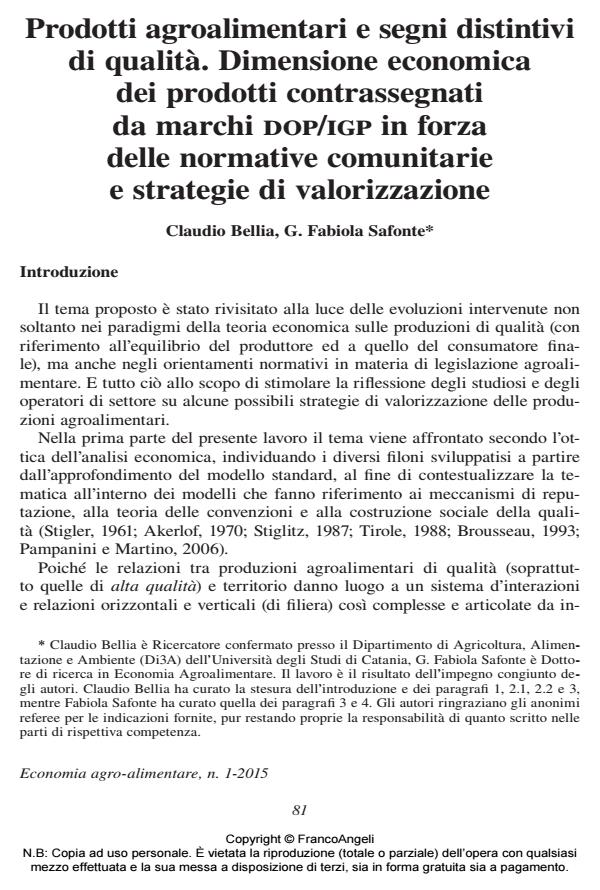Agri-food products and branding which distinguishes quality. Economic dimension of branded products such as pdo/pgi under EU legislation and value-enhancement strategies
Journal title ECONOMIA AGRO-ALIMENTARE
Author/s Claudio Bellia, G. Fabiola Safonte
Publishing Year 2015 Issue 2015/1
Language Italian Pages 25 P. 81-105 File size 289 KB
DOI 10.3280/ECAG2015-001005
DOI is like a bar code for intellectual property: to have more infomation
click here
Below, you can see the article first page
If you want to buy this article in PDF format, you can do it, following the instructions to buy download credits

FrancoAngeli is member of Publishers International Linking Association, Inc (PILA), a not-for-profit association which run the CrossRef service enabling links to and from online scholarly content.
The valorization of an agro-food product is an articulated process that interacts with different variables and goes beyond the strictly economic dimension of the business system. Quality products, in particular, are closely related to the environment and to landscape, biodiversity culture and traditions. The valorization of the product in this case is conditioned by several factors that cannot be explained exclusively by normal value of use as measured by the market price. The topic, therefore, is discussed from the viewpoint of economic analysis, identifying various lines which developed, with a more thorough use of standard models, in order to contextualize the issue within parameters which make reference to reputation and convention theories and the quality of social construction. The work focuses, too, on the debate regarding the proper conceptual approach and on the methodology for differentiating collective brands from distinctive ones. Then we move on to a brief review of the legislation on certified products. Finally, valorization strategies for quality-branded agro-food products inspired by analysis of the economic sector, with specific regard to Italian agro-food products.
Keywords: Social constructing of quality, collective marks, distinctive marks, typical product, food quality
Jel codes: D82, D86, Q13, Q18
- Eco-packaging and fresh food products. Analysis of demand and consumer behavior in Italy Marzia Ingrassia, Claudio Bellia, Rosaria Disclafani, Pietro Chinnici, Stefania Chironi, in Economia agro-alimentare 3/2025 pp.71
DOI: 10.3280/ecag2024oa17367
Claudio Bellia, G. Fabiola Safonte, Prodotti agroalimentari e segni distintivi di qualità. Dimensione economica dei prodotti contrassegnati da marchi dop/igp in forza delle normative comunitarie e strategie di valorizzazione in "ECONOMIA AGRO-ALIMENTARE" 1/2015, pp 81-105, DOI: 10.3280/ECAG2015-001005